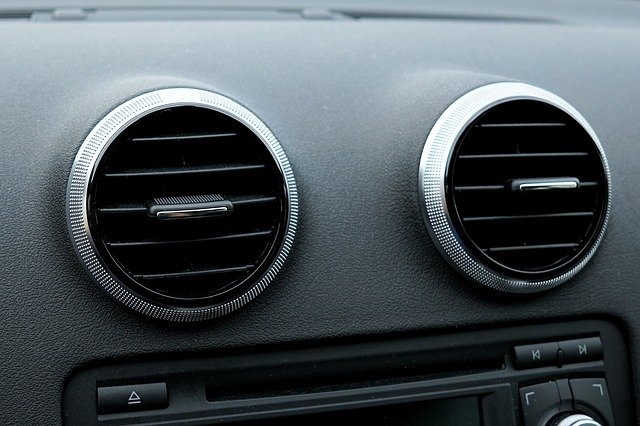
Improving air filtration
The Role of Air Filtration System Design and Engineering in Keeping Building and House Occupants Safe
Read a summary using the INOMICS AI tool
Globally, people spend up to 87% of their time indoors and 6% in vehicles. However, staying indoors for a long time may have negative repercussions on health, as air inside homes and buildings can be very polluted. Indoor air pollution is responsible for 1.6 million premature deaths annually caused by poor ventilation, according to the World Health Organization (WHO). Fortunately, technical engineering makes it possible to design a building that is hospitable to human beings without compromising their health and well-being. One of the most important solutions is to increase the ventilation and filtration of indoor spaces. Designing an air filtration system that replaces air inside homes and buildings with outdoor air at a faster pace is imperative, as is finding ways to filter air effectively and remove dangerous contaminants.

Improving Ventilation and Its Design
Proper circulation of air in a home or building is crucial because airflow improves the quality of air by removing harmful particles and regulating temperatures. Ventilation reduces exposure to airborne contaminants that can cause health problems. The easiest way to achieve good airflow is by simply opening doors and windows to allow the exchange of air that will prevent indoor air from getting stagnant. Ideally, airing a house with a fireplace for 5-15 minutes once a day is sufficient to keep indoor air clean. If there is no hearth, airing the house every other day is fine. To do this efficiently, open the front and back doors and windows to create an airflow allowing the air to be changed efficiently. When a living space is aired at regular intervals, the air smells fresher and better.
Therefore, a home or building design that has plenty of windows and doors can easily help achieve good ventilation. Installing and running fans to enhance the circulation of air is also vital. Exhaust fans will pull out unwanted odours and excess moisture in the air. An enclosed toilet must be fitted with its own exhaust fan. Fans that are approved for installation and use in wet areas must also be part of the design of a bathroom. Doors must also have at a minimum ¾” clearance to the floor without coverings to allow entry of air according to the 'Common Fire Code Construction Issues in Health Care Facilities' by McCulloh.
Ideally, fans should have a timer or other means of control to ensure that ventilation continues for at least 20 minutes after each use. For steam rooms, fans that can be switched on after use will clear the heat and humidity. Another part of a structure that must have good ventilation is the kitchen. The type of kitchen range hood depends on the location of the stove and the volume of cooking performed. Hoods that are mounted above a cooker capture the odour and contaminants and evacuate them effectively using low air volume. Exhaust hoods that have multiple fan speed settings allow low and quiet ventilation for light cooking and higher rates of exhaust for a bigger number of operations. Last but not the least, if a building has an attic or a penthouse, its design must include an exhaust vent to improve air circulation and flow.
Suggested Opportunities
- Junior Industry Job
- Posted 16 hours ago
Junior Manufacturing Engineer
At CV-Library in Abingdon, Großbritannien- Internship
- Posted 1 week ago
QHSE Coordinator
At CV-Library in Alloa, GroßbritannienChanging Air Filters
Although it is easier to design a new structure and fit an efficient heating, ventilation and air conditioning (HVAC) system in place, it is also possible to add on existing systems to keep people healthy. One of the ways to do this is to install efficient furnace or air-conditioning filters. The frequency of changing filters must also be adopted. Filter King recommends installing the right size of furnace/air-con filters to ensure that they do their job of preventing outdoor particles from entering the inside environment. Air filtration has an important purpose: to prevent dust, hair and other unwanted contaminants from being recirculated inside the home or building.
In addition, higher efficiency filters should be installed as they can remove particles of a certain size. The downside to using them in HVAC systems is that they accumulate dust and particles very quickly and must be frequently changed. Another potential issue is that a high pressure drop filter can allow more air to bypass the filter if it is not well-sealed or properly fitted. Hence, before redesigning HVAC systems and fitting new filters, an engineer or specialist must ensure that the upgrade is compatible with the existing one. Installing the wrong filter can be counterproductive as it reduces airflow and allows more particles to enter the building.
Good Practices to Enhance Quality of Indoor Air
There are several ways to curb indoor air pollution in homes and buildings, but as a rule, eliminating the sources or reducing their emissions is an effective strategy. Certain building materials, furnishings, cleaning products, and paint, among others are health hazards. Most of these dangers can be eliminated by selecting materials carefully. For example, avoidance of cleaners that include chemicals reduces the risk of releasing volatile organic compounds (VOCs) in the air. It is estimated that air inside cabinets where cleaning products are kept is 25 times more polluted that outdoor air. Hence, it makes sense to switch to natural and organic brands or products that are used regularly such as bathroom scrubs or countertop cleaners.
Carpets, although soft and warm, unfortunately harbour allergens, bacteria, dust, and other pollutants that harm indoor air, leading to health problems. Therefore it is best to steer clear of them. Avoidance of air fresheners and scented products also ensures that the air is not filled with contaminants or cancer-causing agents. If personal care products are used, it should be done in well-ventilated areas to avoid the build-up of toxic air indoors. Cleaning and vacuuming frequently also prevent dust from accumulating, mould from growing, and other types of toxins and bacteria from adhering to surfaces inside homes and buildings. Where possible, use air cleaners to reduce indoor air pollution or invest in air quality sensors and detectors to monitor air and promptly fix any problem such as high levels of carbon monoxide, carbon dioxide, particulate matter, and so on.
Whether an air filtration system is designed for an office, work building or house, creating a healthy environment is critical to the well-being of their occupants. By designing a system that provides clean air and traps harmful particles, it is possible to keep work and home spaces safe.
-
- Fellowship
- Posted 2 months ago
UNU-WIDER Visiting PhD Fellowship
at United Nations University World Institute for Development Economics Research (UNU-WIDER) in Helsinki, Finnland -
- Konferenz
- Posted 4 days ago
15th International Conference "Modern Building Materials, Structures and Techniques"
Between 12 May and 16 May in Vilnius, Litauen
-
- Professor Job
- Posted 1 month ago
Associate Professor in Informatics
At Free University of Bozen-Bolzano in Bolzano, Italien










